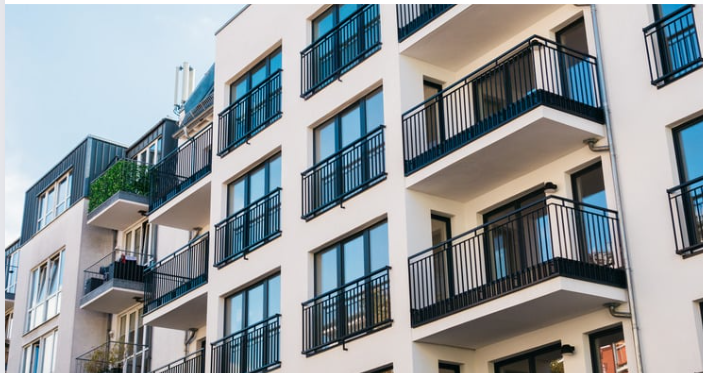Tips for Renovating Properties in Historical Districts
https://buymeacoffee.com/kaysogy/tips-renovating-properties-historical-districts
 Renovating properties in historical districts can be both rewarding and challenging. These unique properties offer the charm and character of bygone eras, but they also come with a specific set of guidelines and restrictions. For real estate investors and homeowners, it's essential to balance modern renovations with the preservation of the property’s historical integrity. This article explores valuable tips for successfully renovating historical homes while ensuring compliance with regulations, increasing property value, and attracting potential buyers.
Renovating properties in historical districts can be both rewarding and challenging. These unique properties offer the charm and character of bygone eras, but they also come with a specific set of guidelines and restrictions. For real estate investors and homeowners, it's essential to balance modern renovations with the preservation of the property’s historical integrity. This article explores valuable tips for successfully renovating historical homes while ensuring compliance with regulations, increasing property value, and attracting potential buyers.
1. Understand Local Historical District Guidelines: One of the most crucial aspects of renovating properties in historical districts is understanding and adhering to local guidelines. Each historical district has its own rules, usually enforced by a local preservation board. These regulations often dictate what you can and cannot alter on the exterior of the building, including roofing, windows, and facades. Before starting any renovation project, consult with your local historical society or preservation commission to ensure you meet the necessary legal requirements. This knowledge will save you from costly mistakes and legal issues later on.
2. Conduct a Thorough Inspection: Properties in historical districts often come with age-related issues such as outdated wiring, plumbing, or structural challenges. Before starting the renovation process, hire a professional inspector familiar with historical properties. They can identify hidden problems that need attention, such as moisture damage, faulty foundations, or termite infestations. A detailed inspection will help you budget accordingly and avoid surprises during the renovation process.
3. Work with Preservation Experts: When renovating a historical property, working with contractors and architects who specialize in historic preservation is vital. These experts understand the nuances of restoring historical elements while adhering to local guidelines. They can help source materials that match the original design, such as vintage brick or traditional windows, to ensure the renovation blends seamlessly with the property’s historical character.
4. Use Authentic Materials: Preserving the historical integrity of the building requires the use of authentic or historically accurate materials. This might include using wood windows instead of modern vinyl alternatives or sourcing antique fixtures that match the period. Authentic materials help maintain the property's aesthetic appeal and meet the standards of historical district regulations. While this might increase renovation costs, it also preserves the property’s long-term value and enhances its appeal in the real estate market.
5. Focus on Curb Appeal: Curb appeal plays a significant role in historical properties, especially in areas where architectural styles from different eras coexist. Renovating in such districts requires maintaining the original charm of the property’s exterior. Restoring the porch, repainting the house with historically accurate colors, or restoring an old wrought iron fence can add significant value. Potential buyers looking for a home in a historical district will appreciate the attention to detail and commitment to preserving the property’s charm.
6. Balance Modern Updates with Preservation: While maintaining historical integrity is essential, it’s also possible to incorporate modern conveniences into a renovation. For example, updating the kitchen or bathroom with modern appliances or energy-efficient systems can make the property more attractive to buyers without detracting from its historic charm. The key is balancing these modern updates with the preservation of historical features, such as hardwood floors, crown molding, and fireplaces.
7. Seek Tax Incentives and Grants: Renovating a property in a historical district can be expensive, but there are often financial incentives available to property owners. Many local and federal governments offer tax credits or grants for the restoration and preservation of historical properties. Research and apply for these incentives to help offset renovation costs, especially if your project adheres to preservation guidelines.
8. Ensure Proper Documentation: Throughout the renovation process, it’s essential to keep detailed records of any changes or improvements made to the property. Proper documentation is critical for historical properties, as it demonstrates your adherence to preservation guidelines and can add value during a future sale. Keep receipts, photos, and written descriptions of any renovations to maintain an accurate historical record of the property.
9. Respect the Neighborhood’s Character: Renovating a property in a historical district is about more than just your home—it’s about preserving the overall character of the neighborhood. While you may want to modernize certain aspects of your property, consider how your changes will affect the surrounding area. Maintaining the architectural harmony of the neighborhood is crucial for protecting the value of your property and those around it.
10. Consult with Neighbors and Community Groups: Finally, engage with your neighbors and local historical groups throughout the renovation. These communities often have a wealth of knowledge and experience regarding historical properties and may offer helpful advice on navigating regulations or finding the right contractors. Building good relationships with neighbors and community groups can also ensure that your renovation is well-received and aligned with the broader goals of preserving the neighborhood’s heritage.
Conclusion: Renovating properties in historical districts requires a delicate balance between modern convenience and historical preservation. By understanding local regulations, working with preservation experts, and using authentic materials, you can enhance the value of your property while maintaining its historical charm. With careful planning and attention to detail, renovating a historic property can be a rewarding endeavor that preserves the past while embracing the future.
Comments
Post a Comment